incl. VAT plus shipping costs
Immediate delivery, express possible ![]()
More than 20 Articles in stock
Delivery only innh. Germany and Austria possible.
Switch to the German store
- Item no: 7614
Fast delivery times
All products are in stock with us!14 years of breeding experience
Let our team of experts advise you!High customer satisfaction
from over 3,000 reviews "| Water values: | soft to hard |
| Breeding: | simply |
| Temperature: | 20-25 °C |
| Behavior: | Active |
| with fish?: | Yes, with peaceful fish |
| Fish group: | Barbs |
| with shrimps?: | with shrimps from 4-6 cm size |
| Planting possible?: | conditional* (see description) |
| Aquarium size: | 100 l (approx. 80cm) |
| Visual effect: | Swarm behavior |
| Origin: | Asia |
| Diet: | omnivorous - omnivorous |
| with snails/shells?: | Yes |
| Final size: | 4-8 cm |
| Difficulty: | 1 - Simple |
| Feature: | dynamic group behavior |
| with large crabs?: | No |
| with dwarf crabs?: | No |
| Pelvic region: | Center |
| with crabs?: | No |
Like its big brothers, the strikingly striped Sumatran barbs or also four-belt barbs, the Golden Sumatran bar b is a Barbus tetrazona and therefore related to them and an albino breeding variety. The Golden Sumatran Barb is also in no way inferior to its relatives in terms of beauty and robustness and is just as easy to care for. Especially for beginners it is an ideal starter fish - if you do not disregard the social behavior of these great animals.
Sumatran barbs actually originate from stagnant and slow waters of Borneo and Sumatra (hence their German name), where they inhabit weedy shore zones in groups. Their habitat stretches across the Kapuas, Mahakam and Bulungan rivers. These fish belong to the carp family and grow to about 6 cm in length when fully grown. The body is high-backed with a terminal mouth and has a yellow-transparent ground color that allows partial views of the skeleton. White horizontal bands run across the body. The first band extends over the eye, partially to over the terminal mouth, the second begins just before the dorsal fin, the third just after, and the fourth is just above the caudal fin root. The trapezoidal dorsal fin is transparent and has a white-turquoise sheen, and the fin seam and base are colored red. The caudal fin appears transparent with an orange sheen in the outer fin seams. The pectoral and anal fins are transparent, but the pelvic fin is more or less bright red. The gill cover is distinctly pink, and the forehead and mouth are distinctly orange in places.
Sumatran barbs maintain a rowdy social behavior, and should therefore be kept in groups so that intraspecies aggression can be dispersed.
The females differ from the males by their more massive appearance, as well as the somewhat paler colors. The males remain somewhat stockier and also smaller, but can get bright intense red colors especially during spawning season. Breeding Sumatran barbs is relatively easy if you keep an eye on the water parameters and food.
For breeding, the aquarium water in the spawning tank should be slightly acidified. A substrate is not essential, but there should be sufficient fine plants and mosses, floating plants help to darken the tank as the animals prefer a shadier environment. Sumatran barbs are very productive free spawners that can lay up to 1,000 eggs, but they may also eat them directly. It is worthwhile to feed the animals intensively for a few weeks before the breeding attempt. Immediately after spawning, the breeding pair is put back. The larvae hatch within 26-48 hours and feed on their yolk sac for the time being. After about 5-7 days, depending on temperature and environment, they begin to swim freely and can be fed very fine dust powder and live Artemia nauplii.
The Sumatran barb aquarium should be at least 100 liters and should be structured with roots and rocks that provide territorial boundaries and privacy. A dense planting with stem plants in places and also the creation of shady corners, for example by floating plants and greened hardscape, is advantageous. This serves the animals as a retreat, especially in the hierarchy weaker animals can gather new strength here. Concerning the water values the animals are tolerant and can be maintained at a pH of 6-7.5, as well as a total hardness between 5-19° dGH, a carbonate hardness of 3-17° dKH and a temperature of 22-26°C. Possibly Sumatra barbs pluck at fine plants. Since they search for food in the mulm, among other things, the aquarium gravel should be round-grained, but preferably dark sand .
Sumatran barbs can be wellsocialized with other lively barbs, such as the five-belt bar b and moss bar bs, firetail fringe lippers are also conceivable, as well as smaller loach species or short-finned catfish. The Sumatran barb is famous for its tendency to nibble fins, therefore a company of fish with long fins such as gourami, guppies, veiltails, angelfish and also fighting fish should rather be avoided. Invertebrates are also rather unsuitable, as they are definitely considered live food. Sumatran barbs maintain a pronounced social behavior with rank order that is constantly being clarified and leads to aggression if their group contains too few animals to buffer it.
The omnivorous Sumatran barbs should be fed a varied diet. They are not particularly picky in their selection, but are considered light feeders, generally taking anything into their tiny mouths that reasonably fits, or at least moves or wriggles in some way (hence the plant or fin nibbling, among other things). They can be fed with live and frozen food like artemia, daphnia, cyclops, tubifex and mosquito larvae, but will also accept almost any commercial granulated, dry, flake and algae food.
Our food recommendation: NatureHolic professional main feed is a professional main feed for all aquarium fish. We supply Hauptfeed in the form of soft granules, which, thanks to its grain size of half a millimeter, can be easily absorbed by small to medium-sized fish. The soft consistency resembles the texture of insect larvae in nature and protects the fish mouth from micro-injuries.
Our plant recommendation: Use for planting NatureHolic InVitros. These are free of snails, planarians and other unwanted co-inhabitants. Also free of algae spores, bacteria and fungi.
Expert Tip: We recommend for fish keeping the NatureHolic 3 Phase Liquid. The care set offers the best all-round protection for your animals. It ensures optimal conditions for successful breeding and keeping.
| Scientific name: | Barbus tetrazona |
| German Name: | Golden Sumatran Barb |
| Difficulty level: | for beginners |
| Origin/Distribution: | Borneo, Sumatra |
| Coloration: | orange-transparent base color with white bands, dorsal fin seam and ventral fin red-orange |
| Age expectancy | 6-7 years |
| Water parameters: | GH 5-19° dGH, KH 3-17° dKH , pH 6.0-7.5, temperature 22-26°C |
| Tank size: | from 100 l |
| Food | Omnivorous, live and frozen food, dry food, granules, |
| Breeding | easy |
| Behavior | territorial and aggressive towards conspecifics |
| Group size | at least 10 animals |
| Further information | Ten typical aquarium fish for beginners and alternatives to them, Tips for acclimating fish to the aquarium, Feeding aquarium fish properly - cheap food and what it can do |
- Item no: 7614
- EAN No.: 7427061497014
Entdecke die Garnelio Welt!
Garnelio gehört zu den größten Onlineshops für wirbellose Aquarientiere weltweit.
Viele Artikel gibt es exklusiv nur bei uns im Shop.

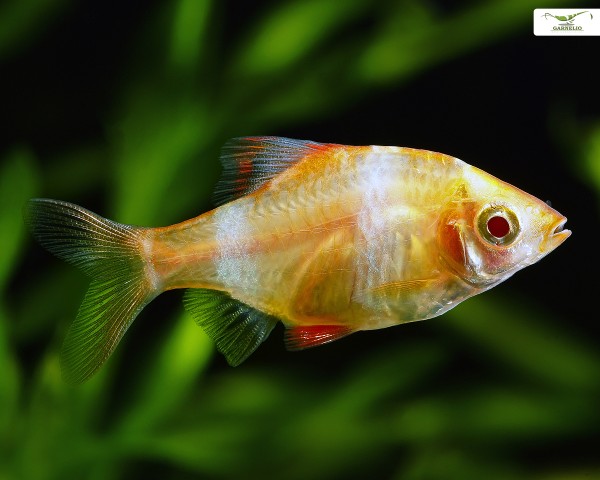

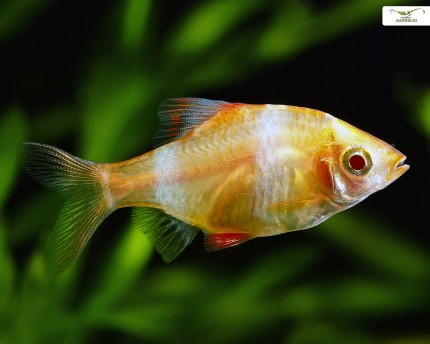
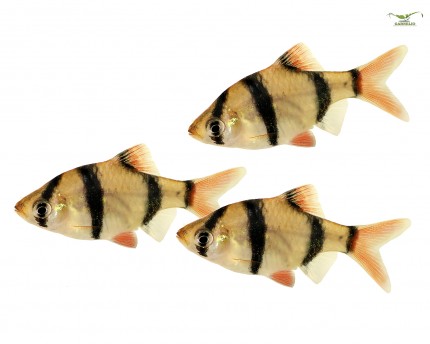
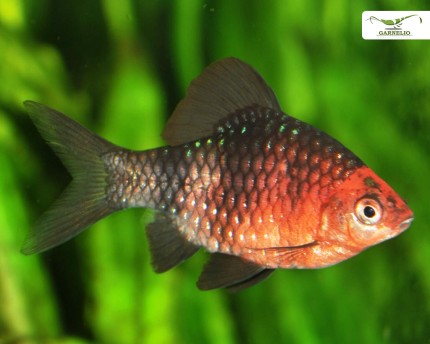
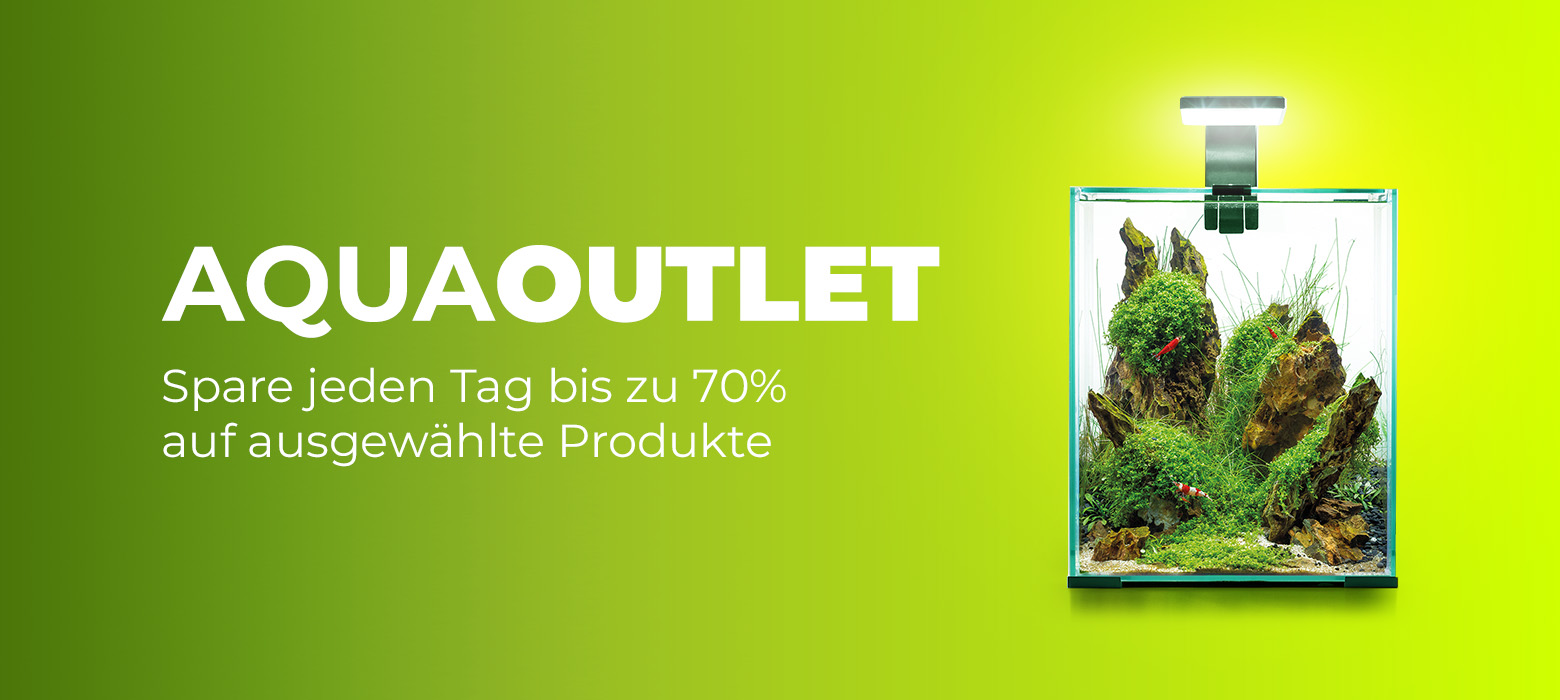
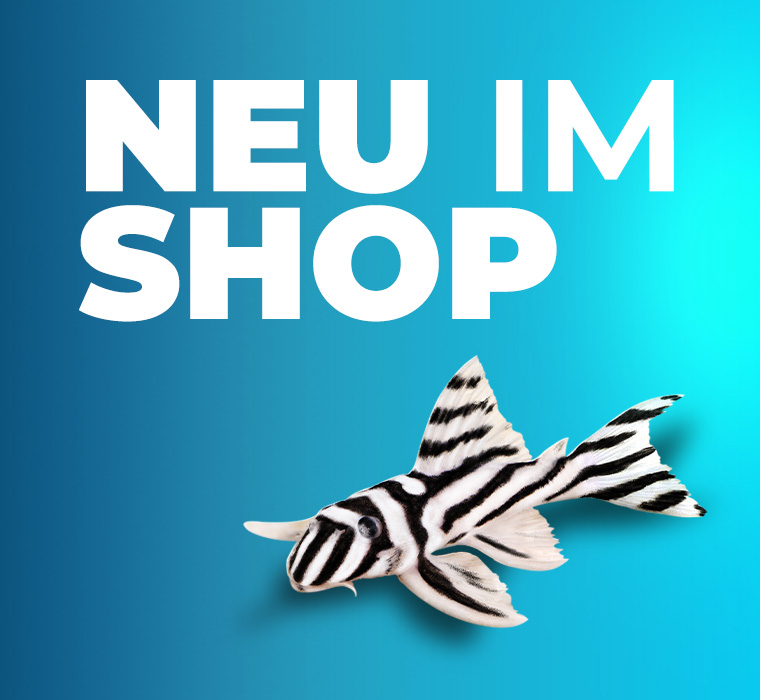


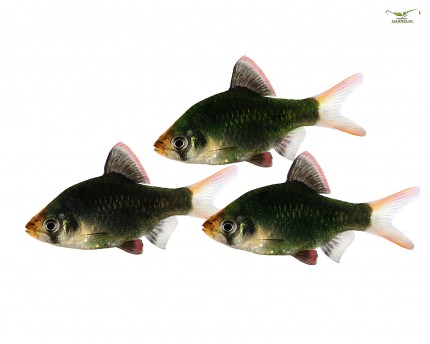
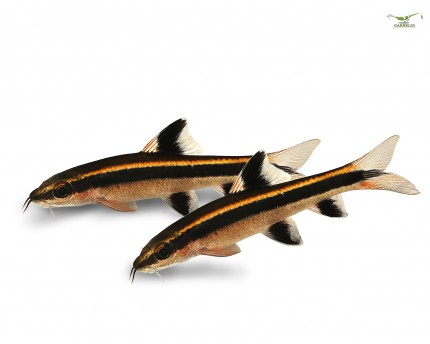
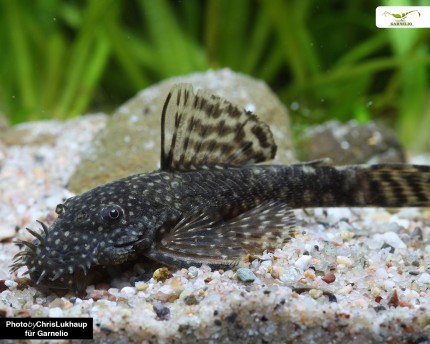
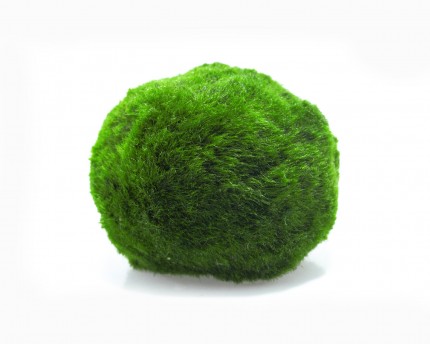
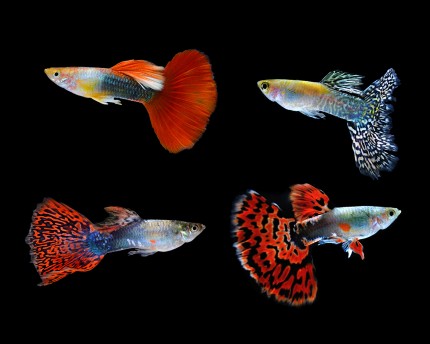
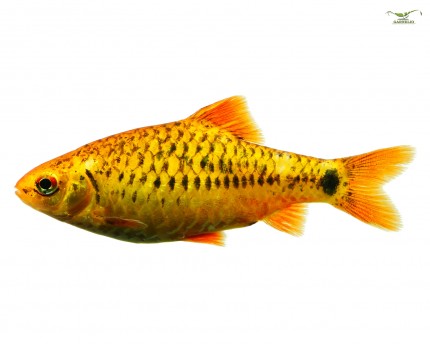
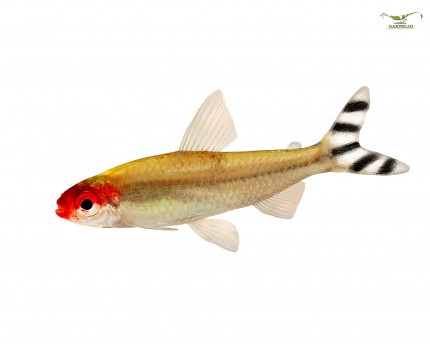
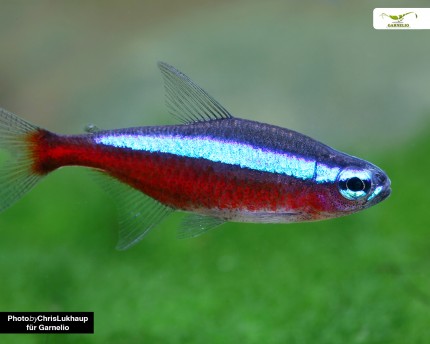
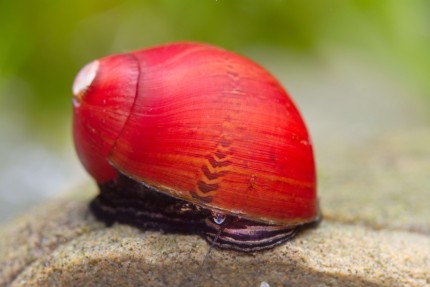
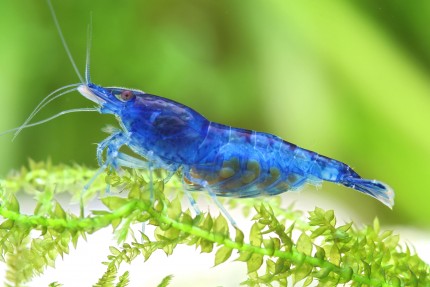
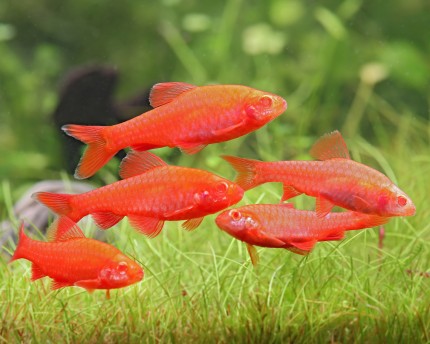
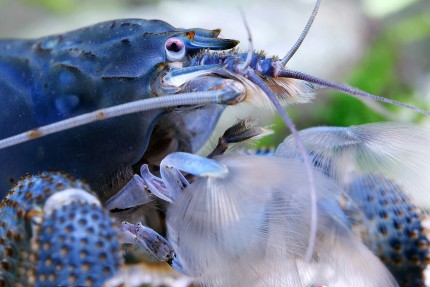
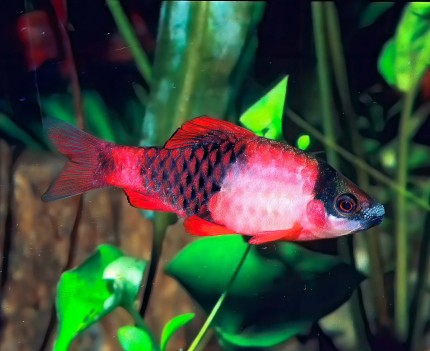
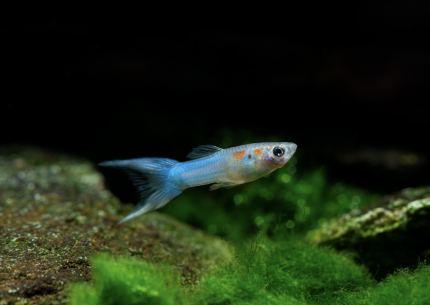
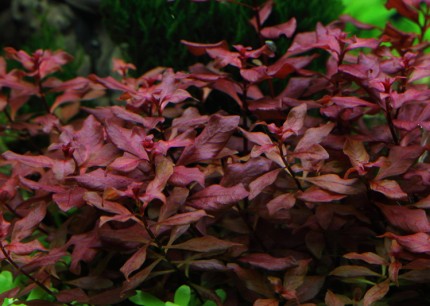
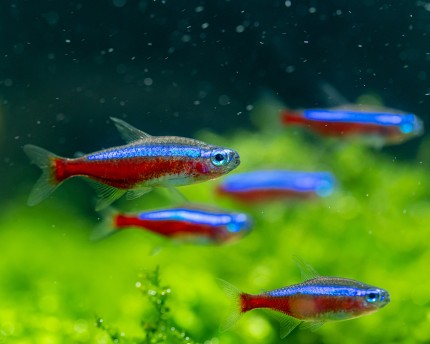
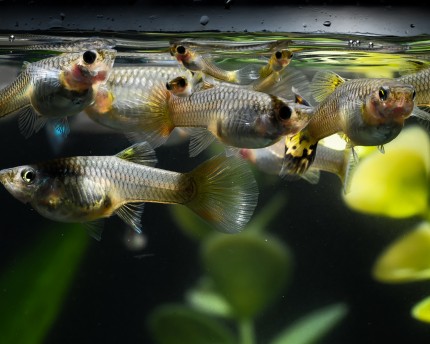
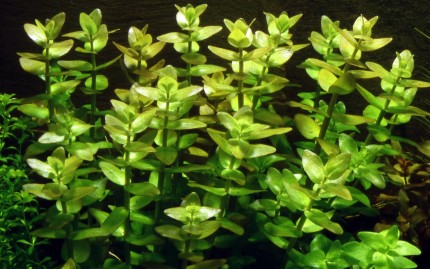
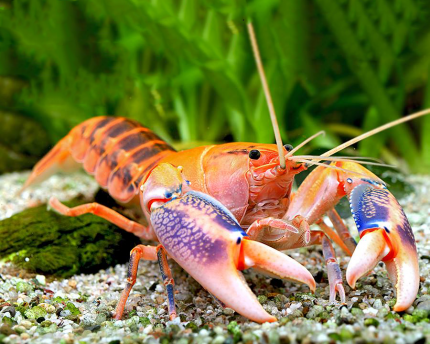
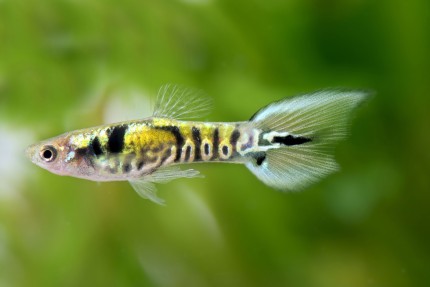
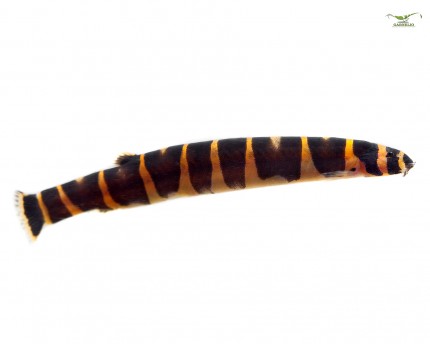
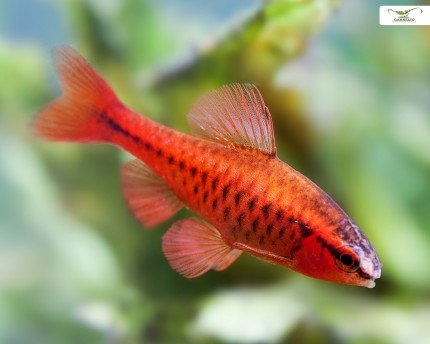
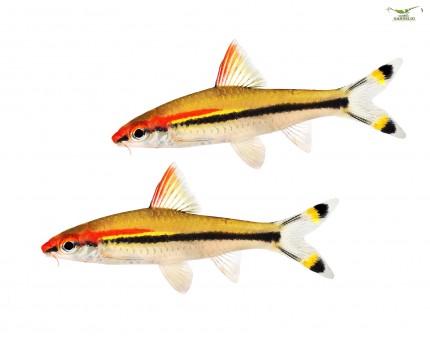
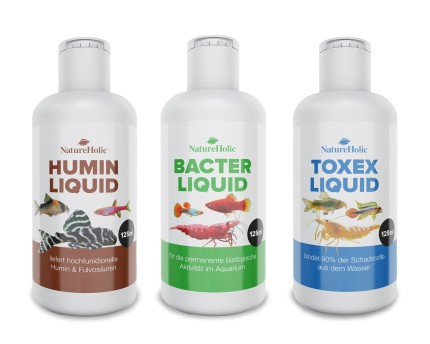
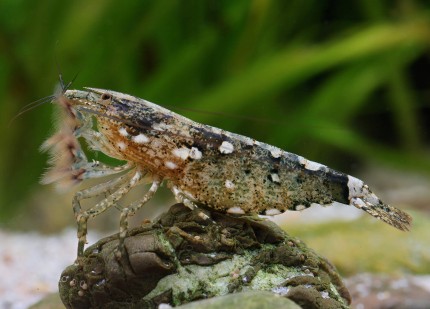
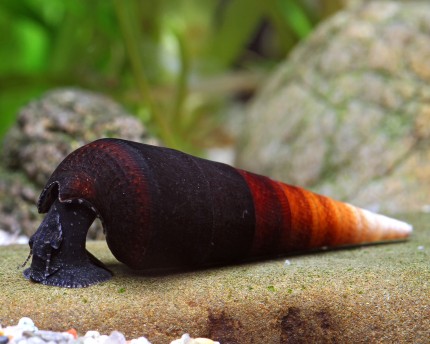
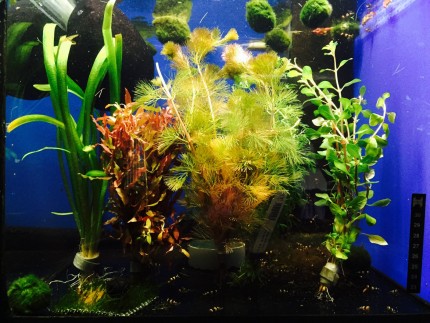
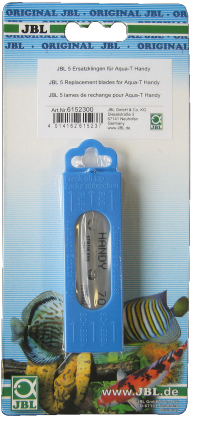
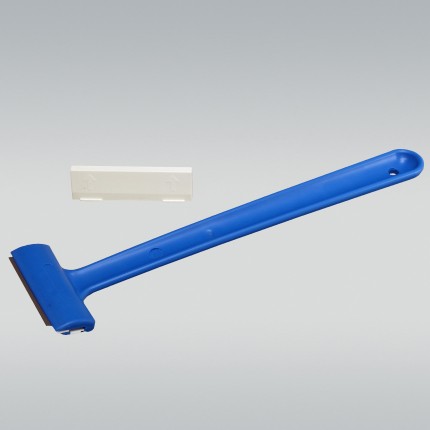
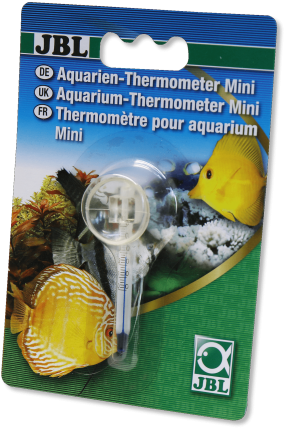

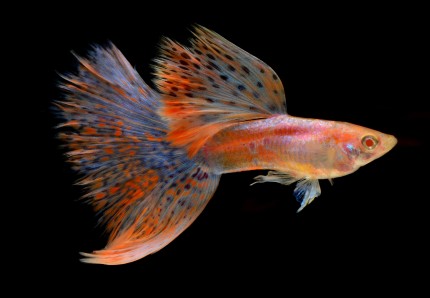

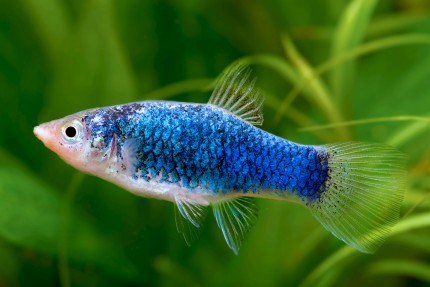
The fields marked with * are required.
I have taken note of the privacy policy.